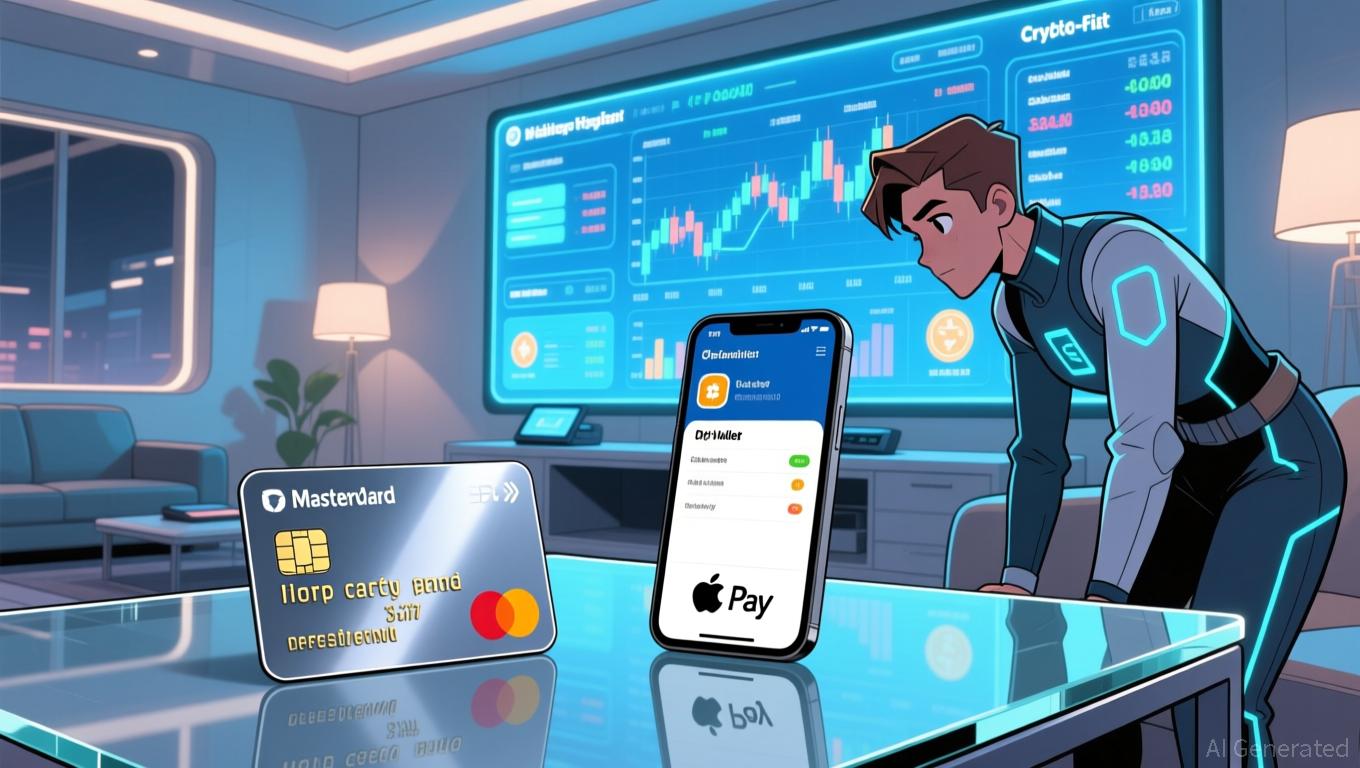Pi Network’s Mainnet: Evolving from Smartphone Mining to an AI-Powered Blockchain Platform
- Pi Network's Testnet 1 achieves near-zero transaction failures, accelerating Mainnet v23 launch after successful high-volume stress tests. - Price jumps 3.5% as AI integration with OpenMind and decentralized computing prove scalability, while KYC streamlining boosts user onboarding. - Upcoming Mainnet will enable smart contracts and DeFi tools, but faces challenges including 10% price decline and only 296 active nodes currently operational.
Pi Network Approaches Mainnet Launch Following Stable Testnet 1 and AI Integration
Pi Network is moving rapidly toward the much-awaited Mainnet v23 rollout after Testnet 1 showcased exceptional stability, with almost no transaction failures even under heavy usage. This testing phase, which handled millions of transactions with very few errors, has increased investor optimism, resulting in a 3.5% rise in the PI token price within a day.

The results from Testnet 1 demonstrated that the network can efficiently manage real-world transaction volumes, with the vast majority of operations succeeding and only rare failures occurring.
Beyond just financial transactions, Pi Network has broadened its use cases through a collaboration with OpenMind, a decentralized AI computing platform. In a proof-of-concept trial, more than 350,000 Pi Nodes provided spare computing power to handle AI tasks, such as image recognition.
To facilitate Mainnet adoption, Pi Network has rolled out an expedited KYC process, allowing newcomers to activate wallets and join the network more swiftly.
Despite these advancements, some obstacles persist. Although technical milestones have been reached, the value of Pi Coin has dropped 10% recently due to overall market instability. Critics also point to low mainnet engagement, with just 296 active nodes and three validators currently online. Developers have voiced concerns about the slow pace of dApp creation and mainnet migration, but recent tests of Stellar’s Protocol v23 and Pi’s participation at TOKEN2049 show ongoing efforts to expand globally.
The forthcoming Mainnet v23 is anticipated to bring smart contracts, decentralized exchanges (DEX), and automated market makers (AMM), transforming Pi from a mobile mining project into a full-fledged blockchain platform.
With Testnet 2 already underway to further evaluate the system’s resilience, Pi Network’s path toward complete decentralization continues. While challenges remain, the project’s ability to merge technological progress with community-driven expansion will be key to its success in the competitive blockchain arena.
Disclaimer: The content of this article solely reflects the author's opinion and does not represent the platform in any capacity. This article is not intended to serve as a reference for making investment decisions.
You may also like
Cardano News Update: EMCD’s Crypto Card Connects Blockchain with Everyday Purchases
- EMCD launched a free crypto payment card enabling USDT spending via Mastercard , Apple Pay, and Google Pay, bridging digital assets to daily transactions. - Competitors like Exodus and Jour Cards introduced similar tools, targeting unbanked populations and expanding crypto utility for iTunes, gift cards, and global remittances. - Stablecoin transaction volumes hit $46 trillion in 2025, with 19% of crypto owners projected to use digital assets for payments by 2026, per eMarketer. - Traditional banks like

Lighter Secures $68 Million to Drive Institutional DeFi Expansion Despite Market Hesitancy
- Lighter secured $68M in a new round led by Founders Fund and Ribbit Capital, valuing it at $1.5B to boost DeFi trading infrastructure. - The funding aligns with a broader crypto VC surge, including Ripple's $500M and Lava's $200M, highlighting institutional interest in blockchain finance. - CEO Vladimir Novakovski emphasized scaling infrastructure with both equity and token subscriptions to enhance institutional-grade trading solutions. - Despite market caution, DeFi protocols like Lighter attract invest
JPMorgan and DBS Establish Unified Cross-Chain Protocol for Institutional Transactions
- JPMorgan and DBS develop blockchain framework for cross-chain tokenized deposit transfers, aiming to set institutional payment standards. - The framework links DBS Token Services with JPMorgan’s Kinexys, enabling 24/7 real-time settlements across public and permissioned blockchains. - It addresses cross-border transaction demands, reducing fragmentation as global banks adopt tokenization. - Overcoming interoperability challenges could redefine institutional liquidity access and market reach.

JPMorgan and DBS Develop Cross-Chain Bridge to Compete with Stablecoin Leaders
- JPMorgan and DBS Bank launch cross-chain framework for real-time tokenized deposit transfers between institutional clients, bypassing traditional payment systems. - The "interoperability highway" enables 24/7 settlements across public/private blockchains while maintaining consistent token value, expanding cross-border transaction capabilities. - As 1/3 of global banks explore tokenized deposits, the partnership challenges stablecoin dominance by offering institutional-grade cross-chain solutions with red